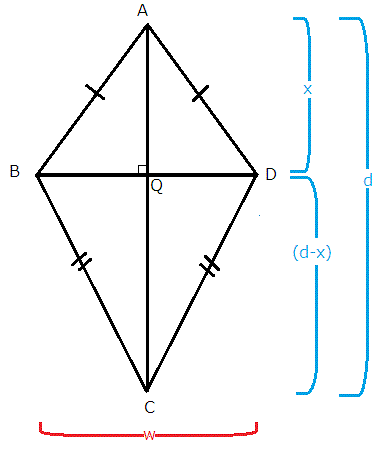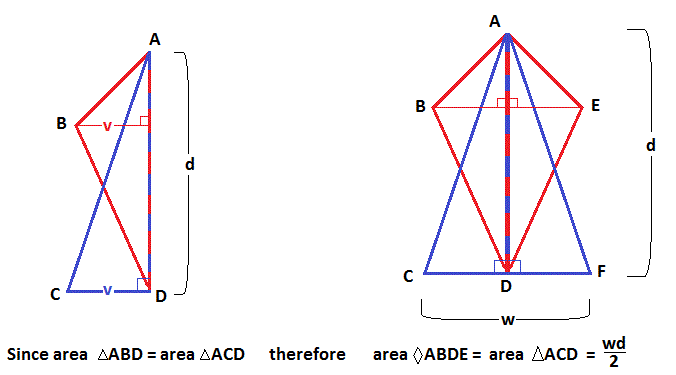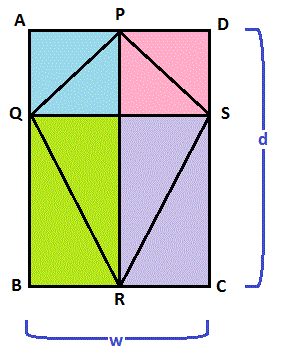How was the formula for the area of a kite created?
2 Answers
Decompose a kite into two triangles and take the sum of the areas of the triangles
Explanation:
Consider the diagram below of a kite with diagonals of length

Here are a couple more images that might make the derivation of the formula for the area of a kite more intuitively obvious.
Explanation:
The kite deformed into a triangle:

The kite embedded in a rectangle:

Segments of the kite occupy
Note that this second image implies that any convex quadrilateral with perpendicular diagonals (of which a kite is an example) has the same formula for its area.
